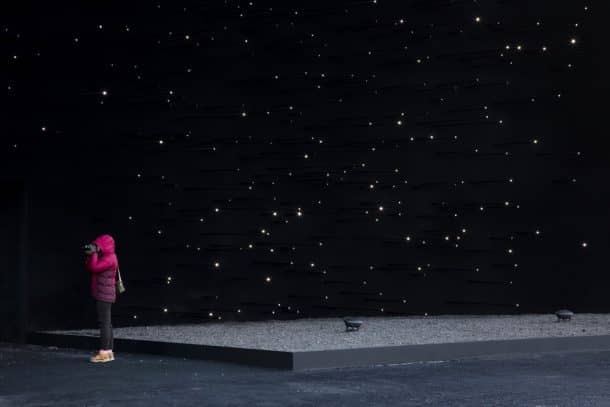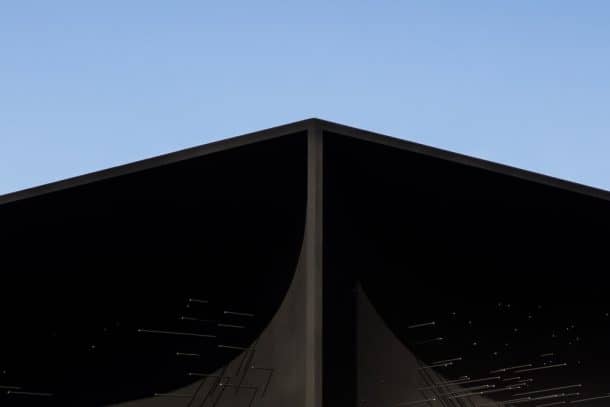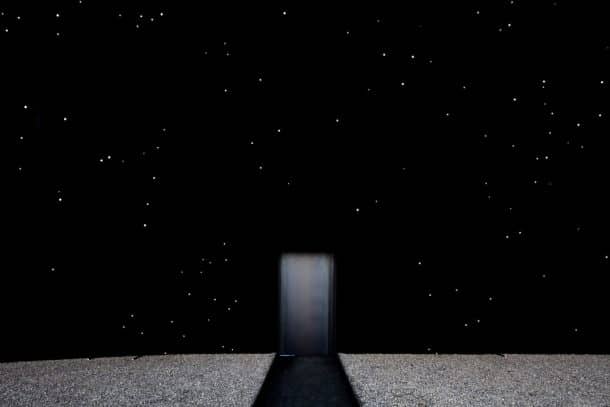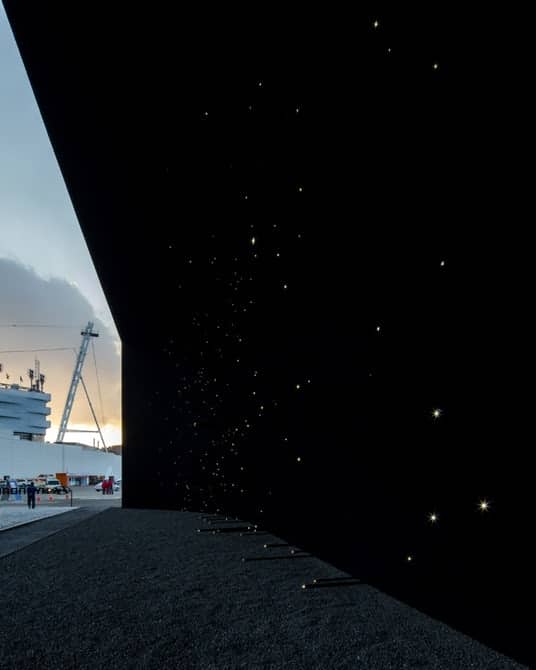In 2014, the blackest material ever was produced. It was called Vantablack and it is capable of absorbing 99.96 percent of light in it. Using the Vantablack, a designer Asif Khan has created a pavilion for the Winter Olympics which is commissioned by Hyundai. When the spray paint form of Vantablack was developed by Surrey Nanosystems in 2016, a lot of controversies quickly spread. Anish Kapoor, a UK artist collaborated with the company to gain exclusive rights to the non-reflective pigment for artistic uses.


The first artistic use of Vantablack spray paint is done by Asif Khan. It is exciting to see that how covering a 3D structure completely into the paint can turn it into a completely flat object. To enhance the illusion further, Khan planted many LED lights in the curved surface and created a kind of starfield effect.


Inside the pavilion is a huge white room which has a giant water installation. The system installed emits 25,000 water droplets every minute. Each droplet travels through a minuscule landscape which is designed in such a way that it resembles a picture of a city viewed from space. The entire experience shifts the viewers’ sense of scale. It moves from the astronomical starfield outside to a planet viewed from above. Khan explained the overall concept saying, “In the project, I wanted to move from the scale of the cosmos to the scale of water droplets in a few steps. The droplets contain the same hydrogen from the beginning of the universe as the stars.”



